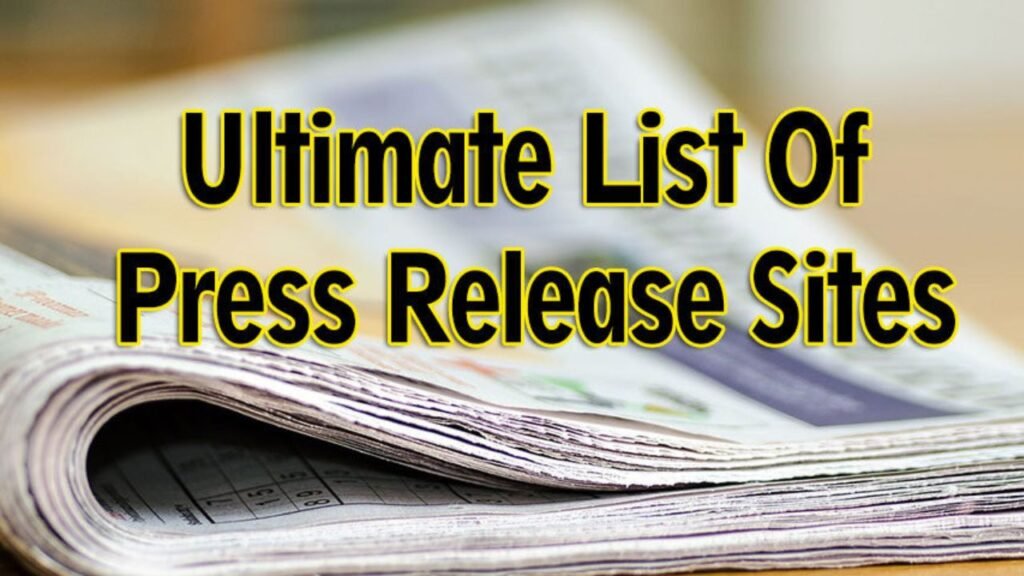To fix an alternate page with a proper canonical tag in local SEO, identify duplicate content and specify the canonical URL for the preferred page using the canonical tag in the HTML head. This helps search engines understand which page to prioritize.
What are Alternate Pages
Alternate pages refer to different web pages that offer content similar to or identical to that of a primary page. These variations may exist due to different URL structures, language versions, or targeted geographic regions.
For instance, an e-commerce website may have product pages with the same content but different URLs for tracking purposes.
Managing alternate pages is important to avoid duplicate content issues and confusion for search engines.
Canonical tags can be used to specify the preferred version of a page, helping search engines understand which page to index and rank. Implementing proper canonicalization helps maintain SEO performance and ensures a better user experience.
Importance of Accurate Page Indexing
Accurate page indexing is crucial for search engine optimization (SEO) as it helps search engines understand your site’s content. Proper indexing ensures pages are discoverable, rank higher in search results, and target relevant audiences, leading to improved visibility, traffic, and user experience.
Issues with Alternate Pages
Alternate pages can cause several issues in SEO, particularly when not managed properly. One common problem is duplicate content, where multiple URLs with similar content confuse search engines and dilute SEO value. This can negatively impact search rankings and user experience.
Incorrect canonical tags can misdirect search engines, leading them to prioritize the wrong page. This hinders the visibility of your preferred content and can affect your search engine ranking.
To resolve these issues, ensure that canonical tags correctly point to the main page, reducing search engine confusion. Regularly audit your website for duplicate content and correct canonical tag issues to maintain strong SEO performance and user engagement.
I am Defining Alternate Pages
Alternate pages refer to different versions of the same webpage, often created for specific audiences or purposes. These can include localized content, mobile-optimized pages, or language variations. Properly managing alternate pages with canonical tags helps avoid duplicate content issues and improves SEO.
Canonical Tags: An Overview
Canonical tags play a crucial role in SEO by specifying the preferred version of a webpage when there are multiple similar pages. By placing the canonical tag in the HTML head, web admins can signal to search engines which page to prioritize for indexing and ranking.
This helps avoid duplicate content issues and consolidates page authority, improving SEO performance. Proper use of canonical tags enhances user experience by ensuring visitors reach the correct page.
Canonical tags guide search engines in handling duplicate or similar content, providing a streamlined and efficient browsing experience for users while supporting optimal SEO strategies.
Confusion in Search Engine Indexing
Confusion in search engine indexing arises when duplicate content, incorrect canonical tags, or inconsistent metadata exist on a website. This leads to multiple versions of a page competing for rankings, impacting visibility. Properly using canonical tags and monitoring index coverage can help resolve this confusion.
Why Proper Canonical Tags are Important in Local SEO
Proper canonical tags play a crucial role in local SEO by preventing duplicate content issues and enhancing search engine rankings. By specifying the preferred version of a webpage, businesses can guide search engines to prioritize the most relevant page for local queries.
This clarity helps avoid content dilution and ensures that the right page is displayed to potential customers in search results. Additionally, it improves the overall user experience by directing users to the most authoritative page for a given topic or location.
Implementing canonical tags correctly boosts local search visibility, leading to increased online engagement and foot traffic for businesses.
I am Avoiding Duplicate Content Penalties
Avoiding duplicate content penalties involves:
- Using canonical tags to signal preferred URLs.
- Creating unique, high-quality content.
- Avoid copying or syndicating content.
You should also regularly audit your site for duplicates, use 301 redirects where needed, and monitor Google Search Console for issues.
How to Identify Pages Needing Canonical Tags
Identifying pages that need canonical tags is crucial for managing duplicate content and optimizing your SEO strategy. Start by reviewing your website for duplicate or similar content across different pages.
Look for similar URLs with minor variations, such as session IDs, tracking parameters, or product filters. Tools like Google Search Console can help identify pages that receive similar search engine visibility. Monitor pages with similar titles or content across different locations, such as regional pages.
Check for paginated content that may benefit from a canonical tag. Once identified, use the canonical tag in the HTML head section to specify the preferred URL for each set of duplicate pages.
Tools for Identifying Alternate Pages
Tools for identifying alternate pages include Google Search Console, which highlights duplicate content and canonicalization issues, and Screaming Frog, a website crawler that pinpoints alternate URLs. SEMrush and Ah refs also offer insights into duplicate pages and suggestions for setting canonical tags.
Implementing Canonical Tags in Local SEO

Implementing canonical tags in local SEO helps avoid duplicate content issues and provides clarity to search engines on which version of a page is preferred. When multiple pages have similar or identical content, adding a canonical tag in the HTML head of each page points to the preferred URL.
This tag helps consolidate page rankings and improve the site’s SEO performance by reducing confusion for search engines.
By designating a canonical URL, you guide search engines to prioritize the chosen page for indexing and ranking, enhancing your local SEO efforts. Proper implementation of canonical tags improves search engine visibility and user experience.
Best Practices for Implementation
How to Fix Alternate Page with Proper Canonical Tag in Local SEO, Implement best practices by first conducting a thorough analysis and planning for clear goals and objectives.
Choose the right tools and technologies, ensure proper training and documentation, test thoroughly before deployment, and continuously monitor performance to adjust strategies for optimal outcomes.
Monitoring and Maintenance
Monitoring and maintenance are crucial for the efficient operation of any system or infrastructure. Regular monitoring helps identify potential issues before they escalate, ensuring the smooth functioning of equipment, software, and processes. By using diagnostic tools, organizations can track performance and detect anomalies.
Maintenance involves routine checks, cleaning, and repairs to keep systems running optimally. This can include updating software, replacing worn parts, and adjusting settings to improve efficiency. Proper monitoring and maintenance extend the lifespan of assets, reduce downtime, and improve safety.
Investing in consistent monitoring and maintenance saves time and money in the long run by preventing costly breakdowns and ensuring reliable performance.
Regular Checks for Canonical Tag Effectiveness
Regular checks for canonical tag effectiveness involve monitoring your website for duplicate content and ensuring the preferred URL is correctly specified. Tools like Google Search Console help track any issues. Conduct audits regularly to maintain optimal SEO performance and prevent search engine penalties.
To Avoid
How to Fix Alternate Page with Proper Canonical Tag in Local SEO, To avoid common mistakes in SEO, focus on the following strategies:
- Duplicate Content: Use canonical tags to specify the preferred version of duplicate pages.
- Keyword Stuffing: Avoid overloading pages with keywords; use them naturally.
- Ignoring Local SEO: Optimize for local searches with location-specific keywords and business listings.
- Neglecting Mobile Optimization: Ensure your website is mobile-friendly for better user experience and rankings.
- Poor Link Building: Build high-quality, relevant backlinks rather than engaging in spam my link-building practices.
- Slow Page Loading: Optimize website speed by compressing images and minimizing scripts.
By avoiding these pitfalls, you can improve your website’s SEO performance.
Misuse of Canonical Tags
Misuse of canonical tags can harm SEO by directing search engines to prioritize incorrect pages, causing loss of traffic and ranking issues. Avoid using canonical tags to manipulate ranking or consolidate unrelated content. Properly implement canonical tags to guide search engines to the preferred version of a page.
Benefits of Proper Canonical Tags
Proper use of canonical tags offers several benefits for SEO and website management. First, it helps avoid duplicate content issues by specifying the preferred URL for search engines, improving search engine ranking and visibility. Canonical tags guide search engines to the main version of a page, boosting its authority and consolidating page rank.
Additionally, canonical tags streamline analytics data by attributing metrics to a single URL, making it easier to track performance accurately. They also enhance the user experience by directing visitors to the most relevant and up-to-date content. Overall, proper canonical tag usage is essential for optimal website SEO and user engagement.
It has improved Search Engine Ranking
Improving search engine ranking requires optimizing website content with relevant keywords, quality backlinks, and mobile-friendly design.
Regularly updating content and focusing on user experience enhances visibility and credibility. Engaging social media presence and quick loading times also contribute to better search engine rankings.
Case Studies
Case studies are an effective way to showcase real-world applications and success stories. They provide tangible examples of how a product, service, or strategy has been implemented to solve a specific problem or achieve a particular goal.
By examining detailed accounts of challenges faced and solutions applied, businesses and individuals can gain insights into best practices and innovative approaches. Case studies often include data and metrics to demonstrate impact, offering credibility and validation.
For companies, they can serve as powerful marketing tools, highlighting their expertise and results. For readers, they offer valuable lessons and inspiration for tackling similar issues in their work.
Examples of Successful Canonical Tag Implementation
How to Fix Alternate Page with Proper Canonical Tag in Local SEO, Successful canonical tag implementation can be seen in e-commerce sites like Amazon and Walmart, which use canonical tags to consolidate duplicate product pages. Similarly, news websites like The New York Times effectively use canonical tags to manage identical articles across multiple URLs.
Expert Tips and Insights
Expert tips and insights can provide valuable guidance for improving performance and achieving success in various fields. Start by staying updated with industry trends and news. Networking with peers can offer fresh perspectives and opportunities. To stay competitive, prioritize continuous learning and skill development.
Time management and setting clear goals are essential for productivity and focus. Seek feedback and be open to constructive criticism to enhance your work
Leverage technology and tools that can streamline processes and boost efficiency. Lastly, maintain a healthy work-life balance to avoid burnout and sustain long-term productivity. By following these expert tips, you can elevate your performance and achieve your goals.
Strategies for Maximizing Local SEO Impact

How to Fix Alternate Page with Proper Canonical Tag in Local SEO, Maximize local SEO impact by optimizing Google My Business profiles, incorporating local keywords, and ensuring consistent NAP (name, address, phone) details across platforms. Encourage local reviews, create location-specific content, and utilize local schema markup for better visibility and engagement.
Future Trends in Local SEO
Future trends in local SEO emphasize personalization, mobile optimization, and voice search. Businesses need to focus on tailoring content to specific user needs and ensuring websites are mobile-friendly.
Voice search will become more prominent, requiring conversational content and keyword targeting. Local SEO will integrate advanced mapping technologies, highlighting proximity-based services.
AI and machine learning will offer insights into user intent, helping businesses optimize for local queries. Social media and customer reviews will play a significant role in influencing local search rankings. Lastly, visual content like images and videos will gain importance in the search, requiring businesses to maintain a strong visual presence.
Anticipated Developments in Canonical Tag Usage
How to Fix Alternate Page with Proper Canonical Tag in Local SEO, Anticipated developments in canonical tag usage include improved dynamic tag placement for flexible page variations and automated tagging for efficient optimization.
Machine learning may guide canonical selection based on user behavior, and integration with content management systems will simplify implementation and monitoring.
Conclusion
Proper canonical tags play a vital role in ensuring the accurate indexing of web pages and maximizing search visibility. By addressing alternate pages with the appropriate canonical directives, businesses can enhance their online presence and attract more local customers.
FAQ
How do I Resolve an Alternate Page with a Proper Canonical Tag?
Navigate to Coverage > Alternate page with proper canonical tag and review the listed pages. Determine if any of them should not be canonicalized. If you find such pages, update the canonical link to point to the page itself.
How do I Fix Canonical Issues in SEO?
HTTP/HTTPS and WWW/non-WWW canonical issues can be resolved by implementing a sitewide 301 redirect to the correct URL version. One of the easiest and safest methods is to set up the redirect through your website’s hosting provider.
How do Canonical Tags Affect SEO?
Canonical tags inform search engines of a preferred or standard resource among similar or duplicate content, helping to resolve SEO issues. Duplicate content negatively affects SEO and can be identified using a duplicate content checker or by crawling with tools like Ryte.
Why Alternate Pages with Proper Canonical Tags?
If the “Alternate page with proper canonical tag” message appears in the Page indexing (Index Coverage) report in Google Search Console, it suggests duplicate or thin content. It indicates you’ve selected the preferred version of your content to be shown in search results.
What is the Difference Between Canonical and Alternate Tags?
The rel alternate tag is like the canonical tag in that it helps manage content relationships. However, unlike the canonical tag, rel alternate is used to connect pages with entirely different versions of similar content, such as pages in different languages or formats.



































How to Add Comments to Your Coppermine Photo Gallery
Adding comments to your Coppermine photo gallery amplifies user engagement and fosters community interaction. This feature-rich capability allows visitors to share their thoughts, insights, and feedback, creating an interactive environment around your photo collections. With customizable settings, you have full control over comment permissions, moderation, and anti-spam measures, ensuring a safe and enjoyable user experience.
Posing prompts and questions encourage lively discussions, and responding to comments actively engages your audience. Seamlessly integrate social media sharing buttons to expand the reach of your gallery and optimize user-generated content for improved search engine visibility. Should any issues arise, troubleshooting support is readily available to address common concerns such as comment display errors and spam control. Additionally, flexible integration options allow you to enhance functionality by incorporating third-party comment systems.
Table of Contents
Importance of User Comments
User comments are pivotal in enhancing the Coppermine photo gallery experience by fostering community engagement and feedback. They provide a platform for visitors to express their thoughts, share insights, and connect with like-minded individuals.
User comments add depth and context to the photo collections, transforming them from static images into interactive narratives. By encouraging interaction and dialogue, user comments create a sense of belonging and investment among gallery visitors, ultimately enriching the overall browsing experience.
Setting up Coppermine Photo Gallery
Installing Coppermine
Installing Coppermine is the initial step in setting up your photo gallery. Begin by downloading the latest version of Coppermine from the official website. Once downloaded, follow the installation instructions provided, which typically involve uploading the files to your web server and configuring the necessary permissions.
Ensure that your server meets the minimum requirements for running Coppermine, including PHP and MySQL support. After successful installation, you can customize your gallery’s settings and add your photos to showcase your collections to the world.
Configuring Basic Settings
Configuring basic settings in Coppermine is essential for tailoring your gallery to your preferences. Access the admin panel to begin customization, where you can define crucial details such as the gallery title, description, and permissions.
Set the tone for your gallery by crafting an informative and inviting description that accurately reflects its content. Adjust permissions to control who can view and interact with your photos. Take advantage of this opportunity to establish a cohesive and engaging environment for your visitors, laying the foundation for a memorable browsing experience.
Enabling Comment Feature
Enabling the comment feature in your Coppermine photo gallery empowers visitors to engage with your content more deeply. To activate this feature, navigate to the “Config” section within the admin panel and locate the “Comments” settings. You can toggle the comment feature, allowing users to leave feedback and interact with your photos.
Customize settings such as the display order and pagination to optimize the commenting experience for your audience. By activating this feature, you open the door to valuable interactions, feedback, and discussions that enrich the overall browsing experience for visitors to your gallery.
Comment Permissions
Comment permissions in your Coppermine photo gallery allow you to control who can participate in discussions and interact with your content. Within the admin panel, navigate to the comment settings to define specific permissions based on user groups.
This granular control ensures that only trusted individuals or certain user categories can post comments and engage with your photos. By setting appropriate permissions, you maintain a safe and respectful environment while fostering meaningful interactions among your audience. Take advantage of this feature to curate a vibrant and engaging community around your photo gallery.
Customizing Comment Settings
Comment Moderation
Comment moderation is crucial to customizing your Coppermine photo gallery’s comment settings. With moderation tools, you can review comments before they appear publicly, ensuring that inappropriate or spammy content is filtered out.
Enable this feature within the admin panel to maintain a positive and respectful user environment. By actively moderating comments, you can uphold the quality of interactions and cultivate a welcoming atmosphere that encourages meaningful engagement and discussion among visitors to your gallery.
Anti-Spam Measures
Implementing anti-spam measures is essential for safeguarding your Coppermine photo gallery from unwanted and disruptive content. Utilize tools such as CAPTCHA or Akismet integration to filter out spam comments and prevent automated bots from flooding your comment section.
These measures help maintain the integrity of your gallery’s discussions and ensure genuine interactions prevail. Proactively addressing spam creates a more pleasant and secure environment for visitors to engage with your photos and contribute meaningful comments.
Encouraging User Interaction
Prompts and Questions
Utilizing prompts and questions is a powerful strategy for fostering user interaction within your Coppermine photo gallery. By posing thought-provoking questions or providing prompts related to your photo content, you encourage visitors to engage and share their thoughts actively.
These prompts can spark conversations, elicit personal stories, and deepen the overall engagement with your gallery. Additionally, responding to comments and actively participating in discussions encourages users to contribute and creates a sense of community around your shared visual content.
Responding to Comments
Responding to comments is crucial to encouraging user interaction in your Coppermine photo gallery. Acknowledging and engaging with visitors’ contributions fosters a sense of connection and community.
Respond thoughtfully to comments, expressing gratitude for positive feedback and addressing inquiries or concerns. This active participation shows appreciation for users’ input and encourages ongoing dialogue and interaction. You cultivate a welcoming environment by being responsive and engaging, encouraging visitors to continue sharing their thoughts and experiences.
Best Practices for Comment Management
Regular Monitoring
Regular monitoring is vital for effective comment management in your Coppermine photo gallery. Stay vigilant by routinely checking the comment section for new submissions. Promptly address inappropriate or spammy comments to maintain a respectful and enjoyable environment for all users.
By staying proactive and responsive, you can ensure that the comment section remains valuable for meaningful interactions and discussions. Regular monitoring also allows you to identify trends, address issues promptly, and foster a positive community atmosphere within your gallery.
Engaging with Users
Engaging with users is key to effective comment management in your Coppermine photo gallery. Take the time to actively participate in discussions by responding to comments, liking, and sharing valuable contributions.
Engaging with users fosters a sense of community and connection, encouraging ongoing interaction and participation. Recognize and appreciate users’ contributions and encourage them to continue sharing their thoughts and experiences. This proactive approach helps create a welcoming and supportive environment where users feel valued and motivated to engage with your gallery actively.
Troubleshooting Common Issues
Comment Display Errors
Comment display errors occasionally occur in your Coppermine photo gallery, disrupting the user experience. If you encounter such issues, ensure the settings enable the comment feature properly. Next, check for any conflicting plugins or themes affecting the display.
Clearing the cache and updating Coppermine to the latest version can also resolve compatibility issues. If the problem persists, seek assistance from the Coppermine community forums or support channels for further troubleshooting and resolution. Regular maintenance and updates can prevent future display errors.
Spam Control Problems
Spam control problems can disrupt the integrity of your Coppermine photo gallery’s comment section, diminishing the user experience. If you’re facing an influx of spam comments, consider tightening your anti-spam measures by enabling CAPTCHA or integrating third-party spam filters like Akismet.
Regularly update your spam filters and block known domains to minimize unwanted content. Additionally, consider implementing stricter moderation policies or community guidelines to deter spammy behavior. By staying proactive and vigilant, you can effectively combat spam and maintain a positive environment for genuine user interactions within your gallery.
Integrating Social Media Sharing
Integrating social media sharing into your Coppermine photo gallery enhances visibility and encourages user engagement. Incorporating social sharing buttons for platforms like Facebook, Twitter, and Instagram empowers visitors to easily share their favorite photos and comments with their social networks.
This expands the reach of your gallery and encourages interaction beyond your website. Additionally, social media integration allows users to tag friends, leave comments, and generate discussions around shared content, further amplifying the gallery’s reach and impact. By leveraging the power of social media, you create opportunities for viral sharing and community building, enriching the overall user experience within your Coppermine gallery.
Optimizing Comment Section for SEO
Optimizing the comment section for SEO in your Coppermine photo gallery can significantly enhance its visibility and discoverability. Start by incorporating relevant keywords and descriptive titles for each comment thread to improve search engine indexing. Encourage users to leave detailed and engaging comments, as user-generated content can increase search engine rankings.
Additionally, consider implementing schema markup to provide search engines with structured data about your comments, enhancing their understanding and relevance. Regularly monitor and moderate comments to ensure the content remains high-quality and relevant. By optimizing the comment section for SEO, you can attract more organic traffic and improve the overall performance of your Coppermine gallery in search engine results pages.
So lastly, Adding comments to your Coppermine photo gallery is a powerful way to enhance user engagement and foster community interaction. By enabling this feature, you create opportunities for visitors to share their thoughts, insights, and feedback, enriching the browsing experience for all users. Implementing best practices for comment management, such as moderation and anti-spam measures, ensures a safe and enjoyable environment. Embrace social media integration and SEO optimization to maximize the reach and impact of your gallery. Ultimately, cultivating a vibrant and interactive community around your visual content is key to unlocking the full potential of your Coppermine photo gallery.
Conclusion
FAQs
Can I Customize the Appearance of the Comment Section in Coppermine?
Yes, Coppermine offers various customization options for the comment section, allowing you to adjust its appearance and layout to suit your preferences.
Are There Any Limitations on the Number of Comments Allowed Per Photo?
Coppermine does not impose any specific limitations on the number of comments per photo. However, you can configure settings to control comment moderation and prevent abuse.
Can I Integrate Third-party Comment Systems With Coppermine?
While Coppermine has its built-in comment feature, you can integrate third-party comment systems through plugins or custom code modifications.
How Can I Encourage Users to Leave Constructive Comments on My Gallery?
Encourage user interaction by asking questions, providing prompts, and responding to comments promptly. Creating a welcoming and respectful atmosphere can incentivize users to contribute meaningful insights.
What Should You Do If I Encounter Spam Comments on Your Coppermine Photo Gallery?
Take proactive measures to combat spam, such as enabling comment moderation, implementing CAPTCHA, and regularly updating your spam filters. Additionally, consider reporting spam activities to relevant authorities or service providers.